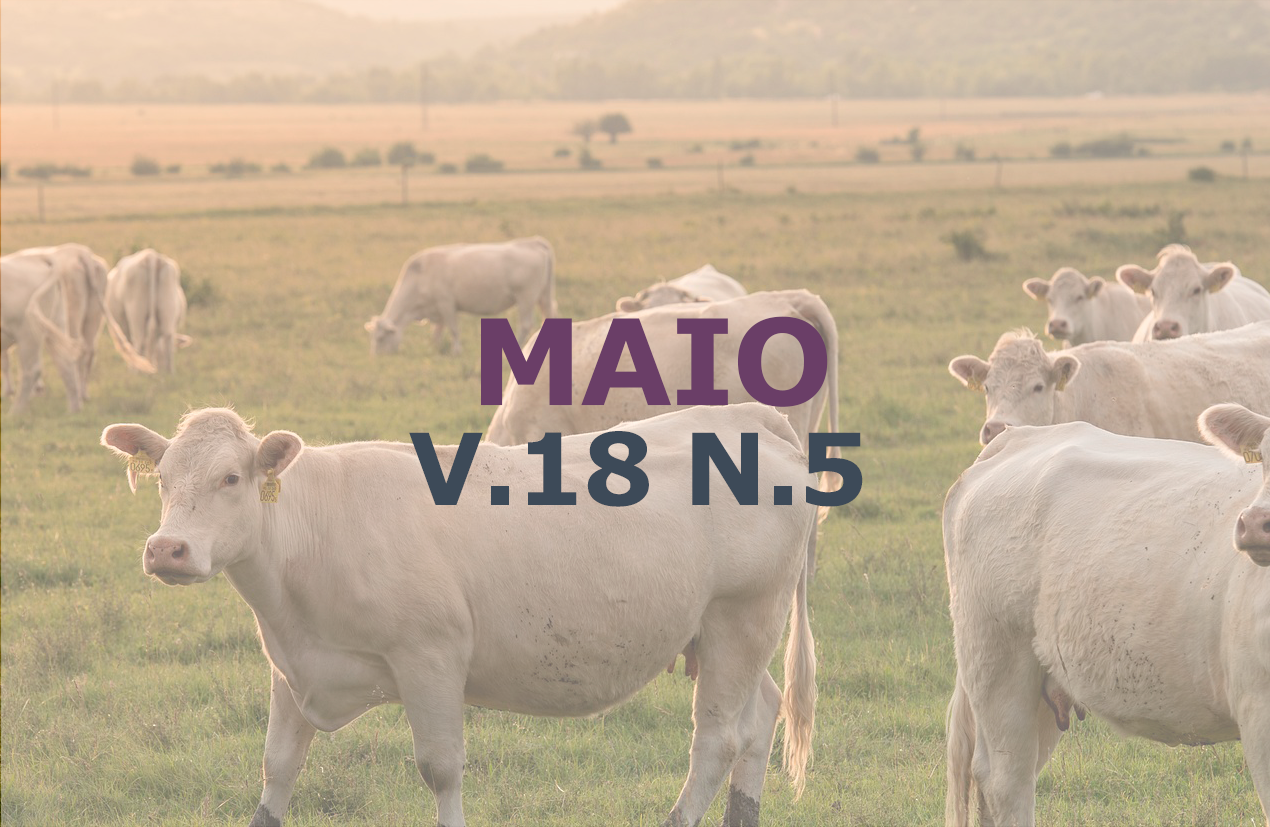Morphological irregularity of tracheal rings in horses, associated or not with cervical malformation
Initial study
DOI:
https://doi.org/10.31533/pubvet.v18n05e1588Keywords:
Equine, cervical radiography, tracheal ring anomalies, equine cervical vertebral malformationAbstract
With the purpose of verifying the existence of irregularities in the tracheal rings of horses and correlating it with the presence of equine cervical vertebral malformation, 45 horses were used, including males and females of different breeds, distributed in two groups. The first group consisted of horses with congenital cervical lesions (GI 10 animals) and the second group composed of horses with non-congenital cervical lesions (GII 35 animals). The first group consisted of horses with cervical lesions of congenital origin (GI 10 animals) and the second group composed of horses with non-congenital cervical lesions (GII 35 animals). Animals were from different parts of Brazil and treated in a private practice over the period of 2019-2023. It was observed that both horses without congenital lesions and those with congenital lesions had tracheal rings of different shapes that did not compromise air flow in the animals studied, and also that all animals with congenital lesions in the cervical vertebrae had a “ridge” in the dorsal portion of the tracheal rings. This was an initial study and we believe that further investigation should be carried out.
References
Bedenice, D., & Johnson, A. L. (2022). Neurologic conditions in the sport horse. Animal Frontiers, 12(3). https://doi.org/10.1093/af/vfac036.
Budras, K.-D., Sack, W. O., & Rock, S. (2003). Anatomy of the horse: an illustrated text. Mosby.
Colville, T. (2011). Anatomia e fisiologia clínica para medicina veterinária. Elsevier Brasil.
Haussler, K. K. (2018). Equine Manual Therapies in Sport Horse Practice. In Veterinary Clinics of North America - Equine Practice (Vol. 34, Issue 2). https://doi.org/10.1016/j.cveq.2018.04.005
Hodgson, J. L., & Hodgson, D. R. (2003). Tracheal aspirates: indications, technique and interpretation. In N. E. Robinson (Ed.), Current Therapy in Equine Medicine (pp. 401–406).
Mannaa, M., Shamaa, A. A., Shawky, A., Hassan, I. M., Refaey, A. M., & Abu-Seida, A. M. (2023). A novel surgical technique for treatment of cervical vertebral stenotic myelopathy (wobbler syndrome) in a filly. Journal of Equine Veterinary Science, 126. https://doi.org/10.1016/j.jevs.2023.104493.
May-Davis, S., & Walker, C. (2015). Variations and implications of the gross morphology in the Longus colli muscle in Thoroughbred and Thoroughbred derivative horses presenting with a congenital malformation of the sixth and seventh cervical vertebrae. Journal of Equine Veterinary Science, 35(7). https://doi.org/10.1016/j.jevs.2015.03.002.
Pezzanite, L., & Easley, J. (2019). Update on Surgical Treatment of Wobblers. In Veterinary Clinics of North America - Equine Practice (Vol. 35, Issue 2). https://doi.org/10.1016/j.cveq.2019.04.002.
Siger, L., Hawkins, J. F., Andrews, F. M., & Henry, R. W. (1998). Tracheal stenosis and collapse in horses. In Compendium on Continuing Education for the Practicing Veterinarian (Vol. 20, Issue 5).
Simmons, T., Petersen, M., Parker, J., Dietze, A., & Rebhun, W. (1988). Tracheal collapse due to chondrodysplasia in a miniature horse foal. Equine Practice, 10, 39–41.
Vasconcellos, L. A. S. (2019). Problemas respiratórios nos equinos e seus métodos de diagnóstico por imagens. Editora MedVet.
Vasconcellos, L. A. S. (2022). Neurologia e neurocirurgia equina: Princípios gerais. Editora Lusófona.
Downloads
Published
Issue
Section
License
Copyright (c) 2024 Luiz Alberto da Silva Vasconcellos

This work is licensed under a Creative Commons Attribution 4.0 International License.
Você tem o direito de:
Compartilhar — copiar e redistribuir o material em qualquer suporte ou formato
Adaptar — remixar, transformar, e criar a partir do material para qualquer fim, mesmo que comercial.
O licenciante não pode revogar estes direitos desde que você respeite os termos da licença. De acordo com os termos seguintes:
Atribuição
— Você deve dar o crédito apropriado, prover um link para a licença e indicar se mudanças foram feitas. Você deve fazê-lo em qualquer circunstância razoável, mas de nenhuma maneira que sugira que o licenciante apoia você ou o seu uso. Sem restrições adicionais
— Você não pode aplicar termos jurídicos ou medidas de caráter tecnológico que restrinjam legalmente outros de fazerem algo que a licença permita.





